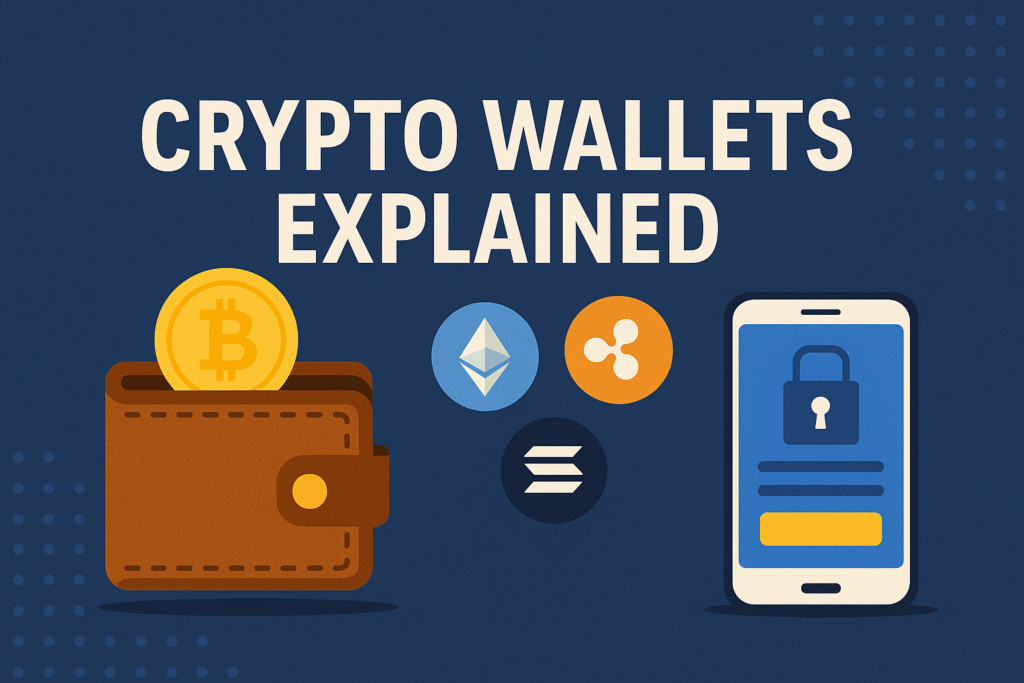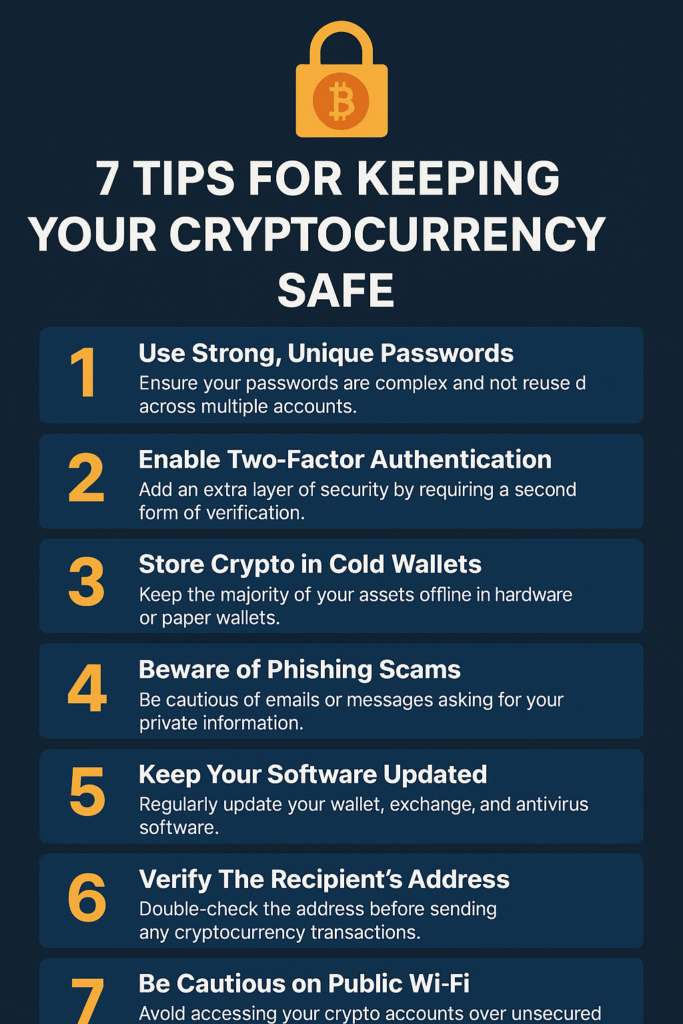
“Not your keys, not your crypto.” – The golden rule of self-custody
If you’re getting into crypto, one of the most important things to understand is how to safely store your digital assets. That’s where crypto wallets come in. This guide will explain what a wallet is, the different types, how they work, and how to choose the best one for your needs.
Whether you’re a total beginner or already holding crypto, this post will help you protect your investments.
📌 Table of Contents
- What is a Crypto Wallet?
- How Does a Crypto Wallet Work?
- Private Key vs Public Key (With Example)
- Types of Crypto Wallets Explained
- Hot Wallets vs Cold Wallets
- Best Wallets in 2025 (With Use Cases)
- How to Set Up a Wallet (Step-by-Step)
- Real-World Case: Mt. Gox Hack
- Safety Tips to Avoid Crypto Theft
- Final Thoughts + Trusted Resources
1. 🧠 What is a Crypto Wallet?
A crypto wallet is a tool that allows you to store, send, and receive cryptocurrencies like Bitcoin, Ethereum, or Solana.
Unlike a physical wallet, it doesn’t store the coins — instead, it stores the private keys that give access to your crypto on the blockchain.
🧾 Think of it like online banking — but where you control the bank.
2. 🔄 How Does a Crypto Wallet Work?
Every wallet has:
- A public key: Like your bank account number; you can share it
- A private key: Like your password or ATM PIN; never share it
When someone sends you crypto, they send it to your public address. Only your private key can unlock and move those funds.
3. 🔐 Public Key vs Private Key (Example)
| Key Type | What It Does | Can You Share It? |
|---|---|---|
| Public Key | Receives funds (like a username) | ✅ Yes |
| Private Key | Authorizes transactions (like a password) | ❌ Never! |
📍 Example:
You want to receive Bitcoin from a friend.
You send them your wallet address (public key):bc1qxy2kg...
Your friend sends 0.005 BTC.
Only you can access those funds with your private key, which might look like:L1aW4aubDFB7yfras2S1mN3bqg9B5Y...
4. 🧳 Types of Crypto Wallets
| Wallet Type | Description |
|---|---|
| Software Wallet | App or browser extension (e.g., MetaMask) |
| Hardware Wallet | Physical USB-like device (e.g., Ledger) |
| Paper Wallet | Printed QR code with keys (outdated) |
| Exchange Wallet | Wallet provided by exchanges like Binance |
5. 🔥 Hot Wallets vs 🧊 Cold Wallets
| Feature | Hot Wallet | Cold Wallet |
|---|---|---|
| Connectivity | Always online | Offline most of the time |
| Security | More vulnerable | Very secure |
| Convenience | Easy to access | Needs physical connection |
| Best For | Daily traders | Long-term holders |
| Examples | MetaMask, Trust Wallet | Ledger, Trezor |
💬 “Hot wallets are for spending. Cold wallets are for saving.”
6. 🏆 Best Crypto Wallets in 2025 (By Use Case)
| Use Case | Wallet Name | Type | Platform |
|---|---|---|---|
| Beginners | Trust Wallet | Hot Wallet | Mobile |
| DeFi Users | MetaMask | Hot Wallet | Browser |
| Security Focus | Ledger Nano X | Cold Wallet | Hardware |
| Multi-Coin Use | Exodus Wallet | Hot Wallet | Mobile/Desktop |
| Bitcoin-Only | BlueWallet | Hot Wallet | Mobile |
🔗 Official sites:
7. ⚙️ How to Set Up a Wallet (Step-by-Step Guide)
Let’s say you want to use MetaMask:
- Go to https://metamask.io
- Install the extension for Chrome/Brave
- Click “Create Wallet”
- Set a strong password
- Backup your seed phrase (12 words) and store it offline
- Start sending and receiving ETH or tokens
📍 Important: If you lose your seed phrase, you lose access to your crypto — forever.
8. ⚠️ Real-World Case Study: Mt. Gox Exchange Hack
In 2014, Mt. Gox (once the biggest Bitcoin exchange) was hacked, and 850,000 BTC were lost.
Many users stored their crypto in the exchange wallet instead of transferring it to their own wallets.
Lesson: Never keep large amounts of crypto in exchanges. Use your own wallet and control your keys.
9. 🛡️ Top Safety Tips for Your Crypto Wallet

- Use a hardware wallet for large amounts
- Never share your seed phrase or private key
- Enable 2FA wherever possible
- Use a strong password + don’t reuse it
- Avoid using wallets on public Wi-Fi
- Update software regularly
- Double-check wallet URLs to avoid phishing scams
📌 Pro tip: Write your seed phrase on paper — never store it on your phone or email.
10. 🧠 Final Thoughts
Your wallet is the gateway to the crypto world. Choosing the right one and learning how to use it properly is the first real step toward being an independent crypto user.
💬 “Your keys, your coins. Their keys, their coins.”
Whether you’re hodling or trading, always remember: Security = Freedom.
📚 Additional Resources
- Ledger Academy – Learn about wallet security
- Bitcoin.org Choose Your Wallet
- Coinbase Learn – Beginner-friendly wallet guides

